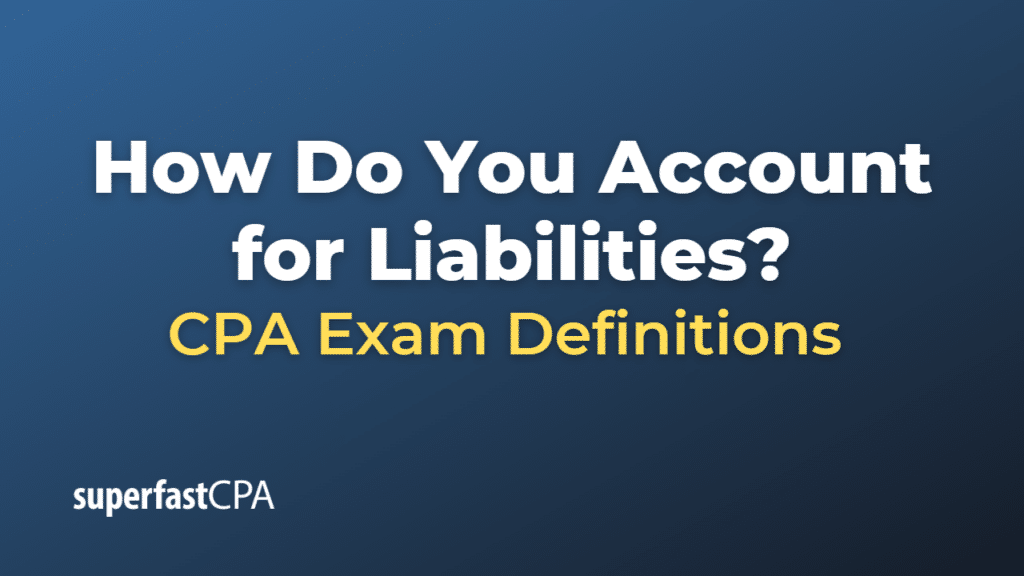How Do You Account for Liabilities
In accounting, liabilities represent amounts owed by a business to creditors, suppliers, employees, tax authorities, lenders, or other parties. They are essentially obligations that the company needs to fulfill in the future. Liabilities are recorded on a company’s balance sheet and are typically categorized into current (short-term) liabilities and non-current (long-term) liabilities.
Here’s how you typically account for liabilities:
- When a liability is incurred:The company will record a liability when it incurs an obligation. For example, when a company receives goods from a supplier but has not paid for them yet, it creates an account payable (a liability). The journal entry would be:
Debit: Expense or Asset (depending on the nature of purchase)
Credit: Accounts Payable (liability)
When a liability is paid off:
When the company pays off the liability, it reduces (debits) the liability account and reduces (credits) its cash or bank account. For example, when the company pays its supplier:
Debit: Accounts Payable (liability)
Credit: Cash
Example of How to Account for Liabilities
Let’s walk through a detailed example of accounting for both short-term and long-term liabilities.
- Short-Term Liability – Accounts Payable:
Let’s say a company, GoodFood Inc., purchases $5,000 worth of ingredients from a supplier on credit. The journal entry to record this transaction (incurrence of the liability) would be:
Debit: Inventory $5,000
Credit: Accounts Payable $5,000
This reflects that the company now has $5,000 more in inventory and also owes $5,000 to its supplier.
After two weeks, GoodFood Inc. pays off its liability to the supplier. The journal entry to record the payment would be:
Debit: Accounts Payable $5,000
Credit: Cash $5,000
This entry indicates that GoodFood Inc. has paid off its $5,000 liability, reducing its cash by the same amount.
- Long-Term Liability – Loans Payable:
Now, imagine GoodFood Inc. takes a loan of $50,000 from a bank to expand its operations. The journal entry to record the receipt of the loan proceeds would be:
Debit: Cash $50,000
Credit: Loans Payable $50,000
This entry shows that GoodFood Inc.’s cash increased by $50,000, and it also has a new liability (Loans Payable) of $50,000.
Over time, GoodFood Inc. will repay the loan along with interest. Suppose it makes a monthly payment of $1,000 (including both principal and interest), the journal entry would be:
Debit: Loans Payable $800 (principal portion)
Debit: Interest Expense $200 (interest portion)
Credit: Cash $1,000
This entry shows that the company has reduced its loan liability by $800, recorded an interest expense of $200, and its cash has decreased by $1,000 due to the payment.
These are basic examples and actual situations could have additional complexities, such as contingent liabilities, accrued expenses, deferred revenue, etc. Always consult with a professional accountant to ensure accurate accounting for liabilities.













